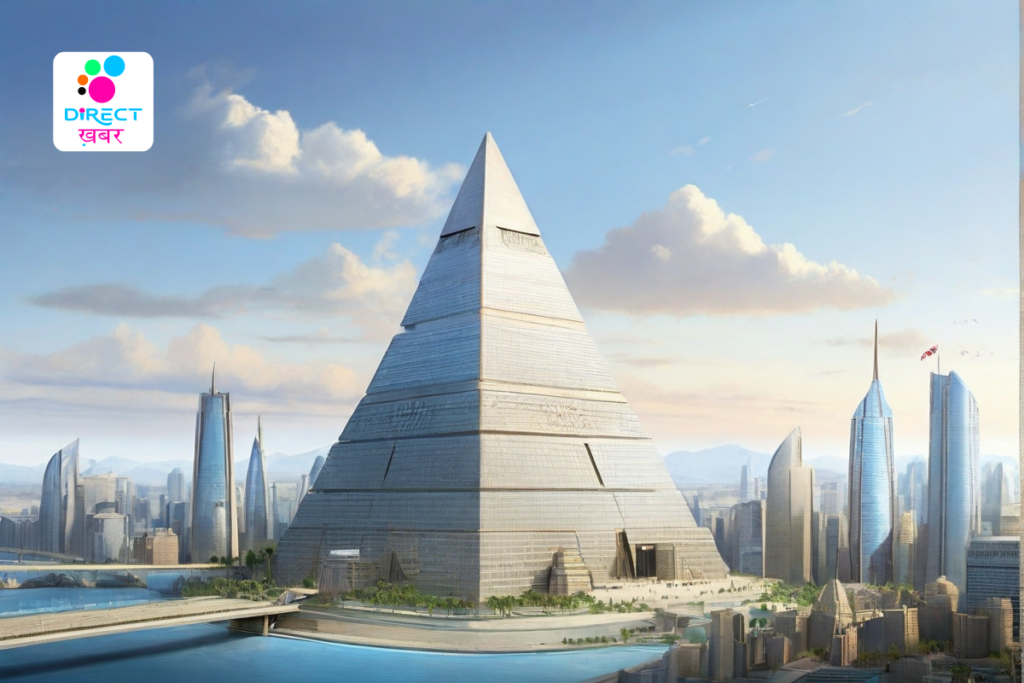The Evolution of Civil Engineering: From Pyramids to Skyscrapers
Civil engineering, one of humanity’s oldest professions, has witnessed a remarkable evolution from the construction of ancient wonders like the pyramids to the towering skyscrapers that define modern cityscapes. This essay delves into the fascinating journey of civil engineering, exploring key milestones, innovations, and shifts that have shaped its trajectory over millennia.

Ancient Engineering Marvels:
The Pyramids of Giza: Built around 2560 BC, these monumental structures stand as enduring symbols of ancient Egyptian engineering prowess. They showcase advanced techniques in quarrying, transportation, and precision construction.
Roman Aqueducts: The Romans revolutionized water supply systems with their sophisticated aqueduct networks, delivering fresh water to cities across their vast empire. These feats of engineering highlight their mastery of arches, gravity flow, and materials science.
Medieval Engineering Ingenuity:
Gothic Cathedrals: During the medieval period, Europe saw the rise of awe-inspiring Gothic cathedrals, such as Notre-Dame de Paris and Chartres Cathedral. These architectural marvels pushed the boundaries of structural engineering, employing flying buttresses, pointed arches, and vaulted ceilings to achieve unprecedented height and grandeur.
Medieval Bridges and Fortifications: Engineers of the Middle Ages constructed sturdy stone bridges and formidable fortresses, employing innovative techniques in masonry and defensive design to withstand the test of time and warfare.
Industrial Revolution and Infrastructure:
Canals and Railways: The Industrial Revolution brought about a paradigm shift in civil engineering, with the construction of extensive canal networks and railways. These transportation arteries facilitated the movement of goods and people on an unprecedented scale, driving economic growth and urbanization.
Iron and Steel Structures: The advent of iron and steel revolutionized construction, enabling the development of bridges, viaducts, and buildings of unprecedented height and span. Iconic landmarks like the Eiffel Tower and Brooklyn Bridge exemplify the bold experimentation and technical innovation of this era.
Modern Innovations and Megaprojects:
Skyscrapers: The 20th century witnessed the rise of skyscrapers, transforming skylines around the world. Innovations in structural engineering, such as the adoption of steel frames and reinforced concrete, made it possible to construct tall buildings that defy gravity and engineering challenges.
Megaprojects and Infrastructure: From the Panama Canal to the Burj Khalifa, civil engineers continue to push the boundaries of possibility with ambitious megaprojects. These endeavors require interdisciplinary collaboration, advanced technology, and meticulous planning to overcome logistical, environmental, and socioeconomic challenges.

Sustainable and Resilient Engineering:
Green Infrastructure: In response to environmental concerns, civil engineers are increasingly prioritizing sustainability and resilience in their projects. Green infrastructure solutions, such as green roofs, permeable pavements, and rainwater harvesting systems, mitigate the impacts of urbanization on ecosystems and enhance community resilience to climate change.
Disaster Resilience: Civil engineers play a critical role in disaster preparedness and response, designing resilient infrastructure to withstand natural hazards such as earthquakes, hurricanes, and floods. Incorporating principles of resilience engineering and risk mitigation is essential to safeguarding lives and property in an uncertain world.
The evolution of civil engineering from the ancient pyramids to modern skyscrapers is a testament to human ingenuity, innovation, and perseverance. As we confront the challenges of the 21st century, from urbanization and climate change to socioeconomic inequality, civil engineers continue to lead the way in shaping a sustainable, resilient, and interconnected world. By building on the legacy of the past and embracing emerging technologies and practices, they will continue to create the infrastructure that sustains and enriches societies for generations to come.
Urbanization, propelled by population growth and migration, has led to the rapid expansion of cities and the strain on existing infrastructure. Civil engineers are tasked with designing and implementing solutions to accommodate growing urban populations while minimizing environmental impact and maximizing efficiency. This involves developing sustainable transportation systems, green spaces, and resilient infrastructure to enhance the livability and resilience of cities.






